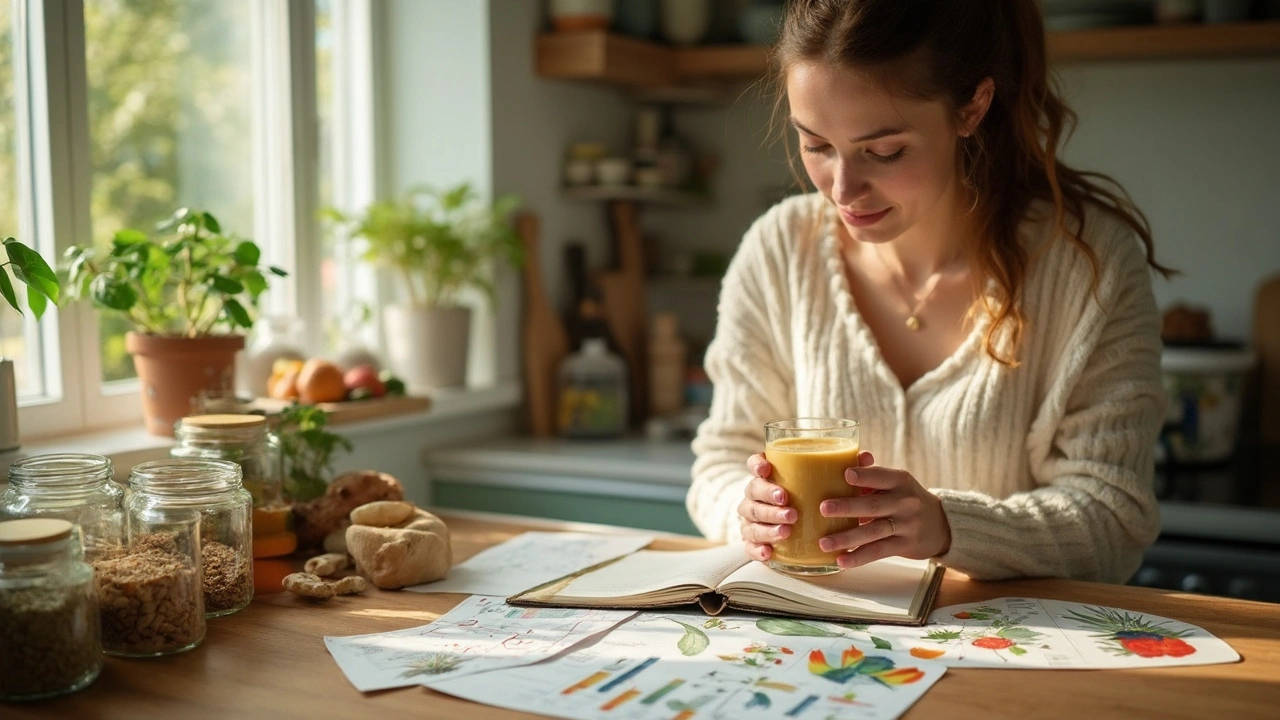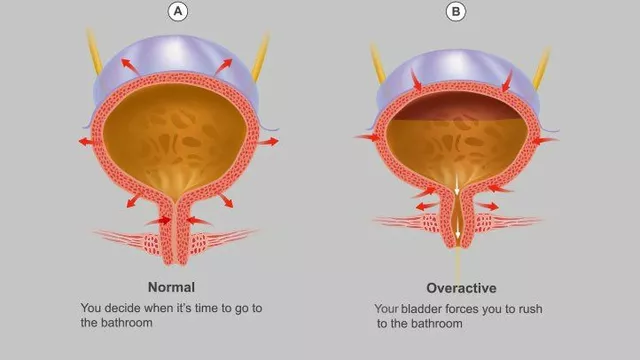Rainforest Remedies Finding Their Place in Modern Wellness
Walk into any trendy wellness store or peek into the pantries of the most health-obsessed folks, and you'll see it: the Amazon rainforest is lending its ancient wisdom to today's self-care routines. But what makes these amazonian herbs so compelling? It's not nostalgia for lost worlds or just some influencer trend. Many Amazonian botanicals deliver unique health benefits, some backed with real research—not just jungle legend.
Long before modern medicine, indigenous communities tapped into the therapeutic magic of rainforest plants. Fast forward to today, and clinical labs are finally catching up, exploring these age-old remedies under the microscope. This has sparked massive global interest—companies source bark, roots, and berries for everything from supplements and teas to skincare bombs. Walk into a supermarket in New York or Sydney, and chances are you'll spot a product boasting 'Rainforest Power' somewhere on the label.
The Amazon isn't a single forest—it's a mind-boggling ecosystem that stretches across nine countries, loaded with biodiversity you can't find anywhere else. That means most plants here evolved their own chemical toolkits to survive insects, fungi, and competition. The result? Plants flush with exotic bioactive compounds—alkaloids, flavonoids, saponins—the kind of stuff pharmacologists dream about. Scientists reckon the Amazon holds as many as 80,000 plant species. Not all are useful, but the few that have been studied seriously have turned up some eye-popping health effects.
Case in point: Whether you deal with chronic aches or you’re seeking immunity power-ups, chances are, there's a plant down there with your name on it. All those heritage stories—about powders stirred into morning drinks or tree bark chewed before a hunt—they serve as a starting roadmap for modern research. There's still mystery, yes, but several Amazonian botanicals stand out thanks to recent studies confirming what shaman healers have claimed for generations.
Let’s dive deep into what’s real and what’s marketing. Which rainforest botanicals are making waves today? Why are health hackers, busy professionals, and even regular folks (like my wife Natalie, who swears by a certain Amazonian tea when stress spikes) flocking to them? Consider this your science-informed look at why these plants are powering up modern wellness—and how you can tap into their benefits without flying to Brazil or Peru.
Unpacking the Science: Standout Amazonian Herbs and Their Health Effects
Let’s get specific—real plants, real compounds, proven impacts. Which Amazonian botanicals are worth your attention (and your dollars)? Here are some of the most researched and buzzworthy, plus what current science says about each.
Chuchuhuasi (Maytenus krukovii): This tree bark has long been a daily go-to in Peru for back pain, joint inflammation, and as a post-workout tonic. Its most famous chemical players are maytansinoids (investigated in labs for their impact on inflammation and even some cancers), along with alkaloids and triterpenoids. Animal studies and a few small clinical trials suggest it may help reduce pain and speed muscle recovery. It’s also loaded with antioxidants. Interesting fact: Recent reviews highlight both its tradition and the science—check out detailed chuchuhuasi benefits for more.
Cat’s Claw (Uncaria tomentosa): A twisted vine prized for immune-boosting, joint support, and as a viral infection helper. The key? Its alkaloids can nudge up phagocytosis (the immune system’s cleaning crew) and tamp down overzealous inflammation. Several studies show mild improvements for osteoarthritis or rheumatoid arthritis patients versus placebos, making it a favorite for folks with creaky knees. A 2010 study in “Arthritis & Rheumatology” suggested participants using cat’s claw felt less joint pain and swelling in under six weeks.
Guarana (Paullinia cupana): Think Brazilian energy. The seeds of this climbing plant deliver way more caffeine than coffee beans—up to 2–4 times more, ounce for ounce. But there’s more than just a jolt: Guarana’s antioxidants (catechins, tannins) interact with caffeine, making its energy smoother and jitter-proof. It’s a mainstay in energy drinks and is now being explored for its mild weight-loss support—a 2022 meta-analysis saw modest improvements in attention and fat metabolism. In the 19th century, Amazonian warriors chewed guarana before battle; today, biohackers use it to squeeze out afternoon productivity slumps.
Açai (Euterpe oleracea): Açai isn’t new, but its fame isn’t just hype. Berries from this slender Amazon palm are neat little powerhouses of anthocyanins and healthy fats. In a human trial published in “Nutrition Journal”, eating açai pulp lowered blood sugar and reduced oxidative stress in overweight individuals. That’s science catching up to tradition yet again. Beware açai powders laced with sugar—look for pure freeze-dried versions to avoid turning a superfruit into a dessert.
Suma Root (Pfaffia paniculata): Sometimes called “Brazilian ginseng”, suma root acts as an adaptogen—helping your body handle stress. Its active ingredient, pfaffoside A, seems to balance hormones, improve stamina, and even boost physical recovery in athletes according to several small studies. Suma has been a women’s tonic for centuries, addressing everything from PMS to anemia, with some test-tube research supporting those uses (high iron content, mild phytoestrogens). There’s a reason suma is woven into many South American daily tonics.
The big picture? Not every Amazonian plant is panacea, but the ones above are backed by published research. Look at the “Materials and Methods” or “Placebo-Controlled” lines in reputable journals if you want to nerd out—these botanicals are more than just modern snake oil.

Traditional Wisdom Meets Lab Results: How Locals Use These Plants
It’s easy to get swept up in the science, but don’t forget where these remedies started: with indigenous wisdom passed down through families and communities. Out in the forest, these plants aren’t sold in capsules—they’re brewed, chewed, pounded into pastes, or mixed with other botanicals for more personalized effects. That context matters. Let’s look at some classic uses straight from the source, alongside what researchers have found.
For instance, Cat’s Claw is often brewed into a bitter tea, not just as a daily immune pick-me-up but in rituals aimed at warding off seasonal “bad airs.” My friend Matheus from Acre swears his grandmother’s Cat’s Claw decoction doubles up as a hangover cure (I can’t vouch for that). Researchers believe the boiling actually activates some of the vine's alkaloids—making teas more potent than the usual standardized capsules.
Chuchuhuasi bark is typically soaked in local sugarcane liquor (“aguardiente”) for weeks. That turns it into a hard-hitting tincture used for everything from joint pain to sexual vitality. When Peruvian athletes want faster muscle recovery, they turn to the same bark their ancestors used after jungle marathons. Studies on these traditional tinctures show a complex mix of compounds, many of which aren’t present in standardized extracts, making the “real deal” local medicine sometimes more diverse in effect.
Açai isn’t a breakfast bowl covered in coconut flakes down there. River communities eat fresh, unsweetened açai pulp as a staple, kind of like rice or bread. The seeds are even used as fuel or ground into flour. All those flashy açai products in the export market? They’re stripped-down versions, often missing the healthy fats due to processing.
Ever hear of Guarana sticks? Local harvesters pound guarana seeds into a hard cylinder, then shave slivers into water as needed—no mess, no wasted energy. When it comes to Suma root, it’s much the same: fresh roots are dried, powdered, and stirred into stews or beverages when cold season hits.
There’s a growing push to respect and protect this grassroots knowledge. Universities in Brazil and Peru are working with indigenous scientists—not just studying the plants, but the entire context around their use. Because let’s be honest: Lab results may isolate the “active” ingredient, but thousands of years of medicine tell us something about the magic in the whole plant—preparation, timing, and tradition included.
Thinking about trying these remedies yourself? A couple of tips: Authenticity can matter just as much as dosage. Look for brands that build partnerships with Amazonian harvesters, support replanting, and explain their sourcing (not just “wild harvested”—real transparency). Traditional preparation methods are often gentler, with fewer side effects. And yep—ask your healthcare provider if you’re mixing these botanicals with medication or hormones.
How to Integrate Amazonian Botanicals Into Your Wellness Routine
Curious about bringing natural supplements from the Amazon into your daily flow? Here’s how to do it safely and smartly, without falling for hype or risking bad side effects:
Start with intention. Why are you turning to rainforest botanicals? Joint pain? Need a clean energy edge? Immune boost? Pinpoint what matters most to you—it’ll help narrow down which herb fits best and how to track if it’s working.
Dose matters—more isn’t always better. Guarana, for example, is potent: just 50–100mg of guarana extract is equal to a whole cup of coffee. Cat’s Claw capsules (standardized for alkaloid content) usually land around 250–500mg per day, but sensitive stomachs do better with teas or decoctions. Chuchuhuasi tinctures vary—start low, check how your body reacts.
Think quality, not just ‘organic’. “Amazonian” on a label doesn’t mean it’s legit, and some shady suppliers adulterate or mislabel their powders. Stick with brands that publish lab results for contaminants (heavy metals, mold). Good companies also partner with indigenous harvesters—not just to score rare herbs, but to support rainforest preservation.
Pay attention to side effects. Guarana, loaded with caffeine, can mess with heart rhythms or anxiety. Cat’s Claw may suppress the immune system if you have autoimmune conditions. If you’re pregnant, nursing, or on blood thinners, check with a doctor first. Pure plant power comes with real responsibility.
Balance is key. Don’t try everything at once—layer in one herb at a time so you can actually sense what’s working. Keep a simple wellness journal: note energy, mood, digestive changes, and anything else you notice. You’ll have a personal record of what’s legit and what’s not.
A quick tip: Mixing botanicals with other healthy habits (like sleep or a build-up of daily movement) boosts the effects. Chuchuhuasi paired with yoga or pilates after work, açai smoothies before a big game—Amazonian herbs are bonus points, not shortcuts, for a richer, more grounded routine.
If you’re hungry for data, take a look at this breakdown of what modern science says about the ‘Big 5’ botanicals discussed earlier:
| Herb | Key Active Compounds | Science-Backed Benefits | Typical Daily Dose |
|---|---|---|---|
| Chuchuhuasi | Maytansinoids, alkaloids, triterpenoids | Anti-inflammatory, muscle recovery, pain relief | 2–5ml tincture or 500mg powder |
| Cat’s Claw | Oxindole alkaloids, glycosides | Immune modulation, joint support, antiviral | 250–500mg capsule, 1 cup tea |
| Guarana | Caffeine, catechins, tannins | Energy, focus, mild appetite suppression | 50–200mg extract, as needed |
| Açai | Anthocyanins, omega fats | Antioxidant, heart health, metabolic support | 1–2 tbsp freeze-dried powder |
| Suma Root | Pfaffosides, saponins, iron | Adaptogen, hormone balance, endurance | 500mg–1g powder, 1 cup decoction |
That’s the lay of the land. Dive in thoughtfully, stay curious, and remember—nature’s powerhouses deliver most when you use them with respect (and good info).






Selena Justin
April 26, 2025 AT 22:23